Let's shrink down for a minute
A visit to the Thorne Miniature Rooms
Go up the stairs, take a right, open the first door you see and there it is: a room that belonged to a dollhouse alone. When I was a kid, visiting my aunt’s house, it seemed like the most decadent thing on earth. There was no pull out bed in the room, not even a side chair or a desk. Just a massive antique dollhouse, filled with tiny furniture that I knew I wasn’t allowed to touch.
The dollhouse room felt just as well-maintained as the rest of the house’s rooms, if not more. Its square footage was similar to the rest of the bedrooms with which it shared a floor. Still, out in the open as it was, it didn’t feel like a space I was supposed to know about. I was the youngest in the family, but the dollhouse wasn’t for childhood imagination, or at least not in the typical sense.
I was reminded of the state of reverence that the dollhouse room inspired when I visited the Thorne Miniature Rooms at the Art Institute of Chicago last fall. After descending the staircase to the museum’s basement, you reach a green-walled room with 68 different period rooms in miniature.
Created by Narcissa Niblack Thorne, the Thorne Miniature Rooms include centuries of decorative styles predominantly from England, France, and the United States, but spaces representative of Germany, Japan, and China appear, too. Built in the 1930s, the rooms are an outgrowth of the museum period room trend that began in the decade prior. They’re not an impartial reflection of the most important moments in design history, but a reflection of Thorne’s own proclivities. Before she’d hired an architect to draw up plans for the rooms, or artisans to help execute the details, Thorne was a passionate miniature collector.
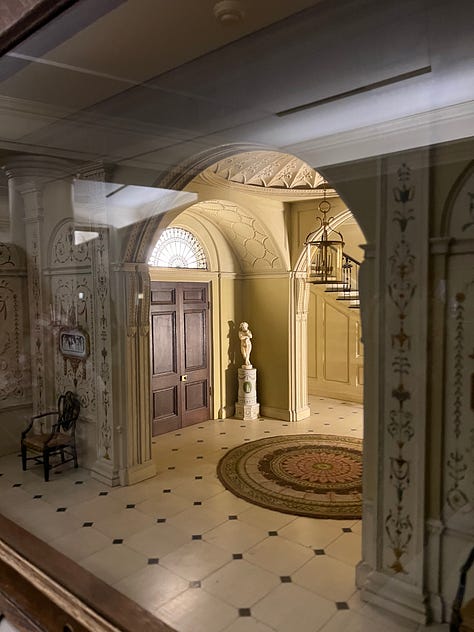
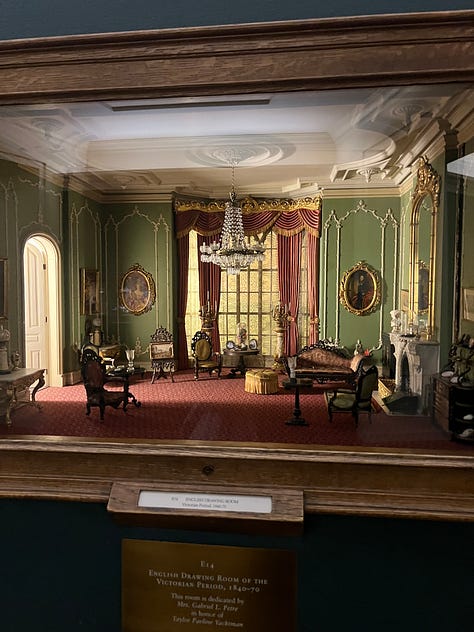


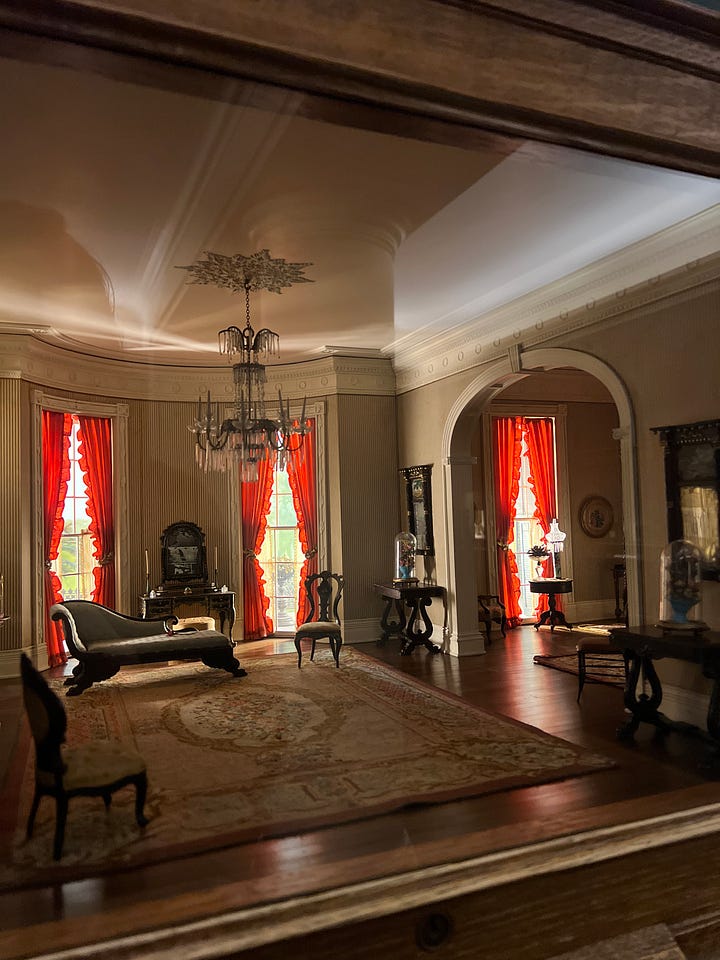
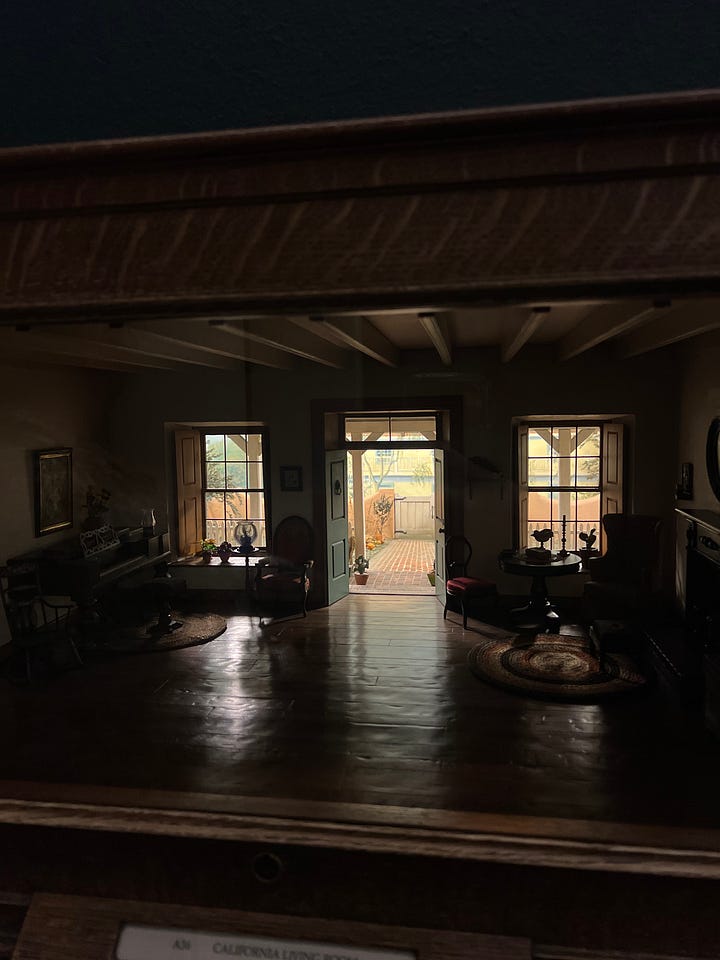
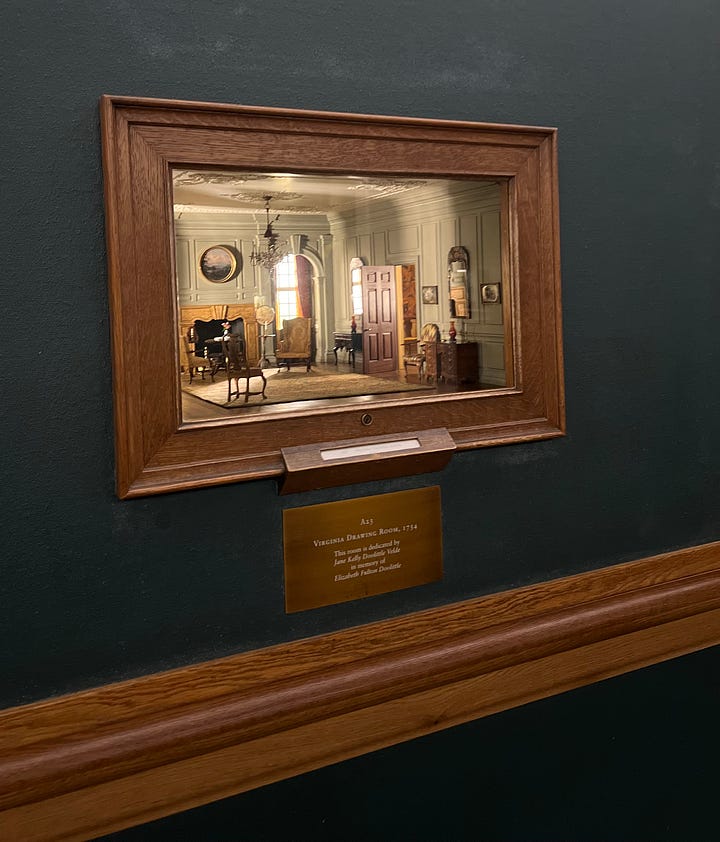
In their range of decorative styles and time periods, a visit to the Thorne Miniature Rooms feels more potent than any relatively meager selection of period rooms at a museum. Without red EXIT signs or wayfinding information muddying the picture, you can disappear into the scenes Thorne made. Placed in inset boxes along the walls, they give you the sense that you’re spying on something, or discovering a secret. Many of the rooms include open doorways through which an additional space can be glimpsed, creating the illusion that entire worlds exist beyond what you can see inside of the box you’re looking through. My favorite moments on my visit to the basement were when several people were crowded around the same box at once, or waiting in line to see the spaces that were the clear winners amidst 67 other options.
I was transfixed in particular by the lighting in each miniature room. It peeks in just so through the period-appropriate window coverings or spills into the center of the room from an entryway off to one side. This in particular feels essential to how lively the spaces feel—so much so that photographers for the book on the rooms “made exposures that took as long as 15 minutes” to properly capture the glowing indirect light, according to the book’s introduction.
The Thorne Miniature Rooms are very much not dollhouses. They were intended as educational tools to display different styles to the masses; there were never any figures included in Thorne’s plan for the spaces. Still, perhaps as any well-designed space does, the rooms beg you to imagine how life would play out inside of them.




Just did a newsletter on miniatures and everyone pointed me to the Throne Rooms after - synergistic!
I had a book about these rooms growing up and seeing them in person was like meeting a celebrity. Absolutely gorgeous